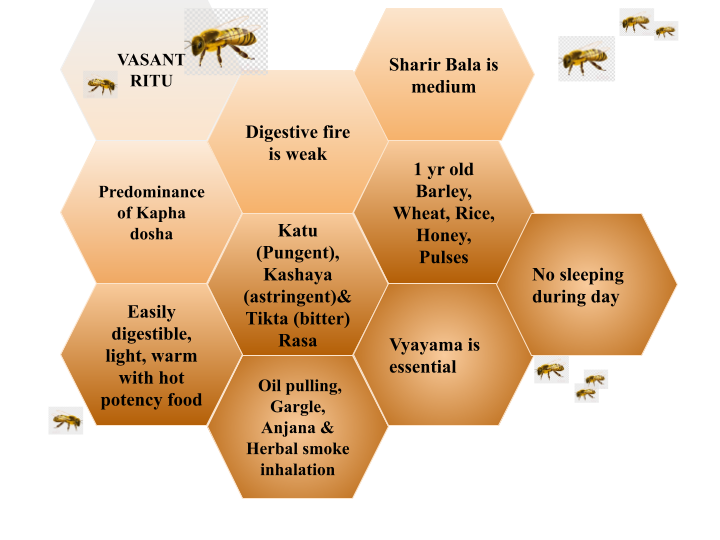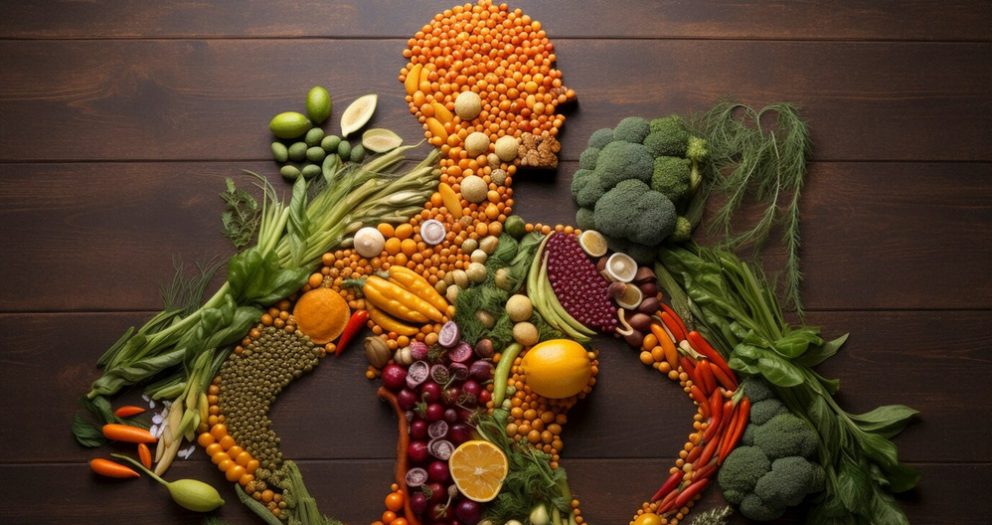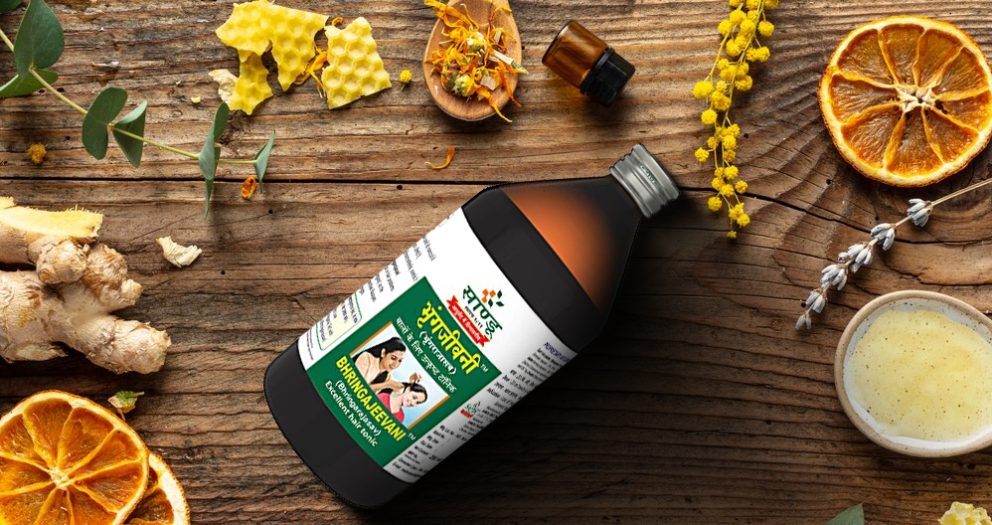Nature is the only one constant in this world which is in harmony with itself. As it follows its course smoothly & without fail. Except us humans who fail to follow through thus suffer from various disorders.
Everyone knows the story of the two cats fighting for delicious cream but ended up not getting any in the end. The smart culprit of this story was the monkey who used their discord for his benefit. Similarly the imbalance caused in our bodies due to inappropriate lifestyle and dietary habits create a window of opportunity. We don’t really have to tell you what opportunity & for who, right?
You know well by now what Pinda Brahmanda nyaya is. Here’s a hint: Homeostasis. What’s more? While discussing Immunity or Bala in Ayurveda classics the Acharyas have mentioned Kalaj Vyadhi i.e diseases occurring as per age and seasonal variations.
If the body is unable to adapt itself to stressors due to changes in specific traits of seasons, it may lead to aggravation of doshas, which in turn may render the body highly susceptible to one or other kinds of disorders. Ritucharya is an important part of preventive measures described in our classics. The word Ritu means to go. It is the form in which nature expresses itself in a sequence in particular and specifically in forms like the seasons.
So, saying see you again soon to winter we are now welcoming Spring or Vasant Ritu. Spring season is the time of new opportunities and beginnings. With the start of uttarayan the sun now moves towards the north. As a result of the heat produced the kapha accumulated in the previous ritu (Shishir/ winter) gets liquified. This causes diminished digestive fire and gives rise to various disorders. All activities suggested as a routine are those which alleviate kapha dosha.
- In the schematic you will find what habits and diet are beneficial during this season.
- Additionally, honey mixed with water is beneficial during this season. As it not only enhances immunity but also has a protective effect in the body, from maintaining a healthy balance of gut microbiota to exerting an antimicrobial, antiviral effect.

- In this attempt, Sandu Chyavanprash Special & Makarprash will definitely ensure an immunity boost.
- But by any fluke of nature you do end up with cold, cough, allergies etc we offer Vasa Cough Syrup, Sandu Sitopaladi churna, Corysan at your service.
Harmony makes small things grow, Lack of it makes great things decay- Sallust
This spring, let us sow seeds of healthy lifestyle and bask in its bloom in days to come. The choice is with you to choose This harmony over dis-harmony.
# SayYesToAyurveda # Vasantritucharya #Spring #SanduPharma #healthylifestyle #SeasonalRegimen #Ayurveda
Dr.Madhuri Bhogan (MD AYU)
Research Associate
In Ayurveda, as there is a daily regimen or routine recommended, there is also a seasonal regimen. The reason is as simple as it gets-
As our external environment changes our body’s internal environment also gets affected. ‘Ritucharya’ (seasonal regimens) mentioned in Ayurveda was devised depending on the movements of the Sun. They are nothing but adaptation techniques so our body can maintain homeostasis at all times. This time period of ‘Makar Sankranti’ is the celebration of ‘Uttarayan’ – Uttara ( North) and Ayana (Movement) of the Sun. It provides us with best quality sunlight to restore the bodies Vit D reserves that the body can utilize up to a year. The food prepared and indulged in during this time also reflects this thought.
When we talk about the ‘Faral’ of Diwali season or the ‘Tilgul ladoos’ of Makar sankranti we are enriching our bodies to have good stores of energy and immunity for the year ahead.
Let us understand this using the perfect example of Makar Sankranti. This day forward we often find large quantities of freshly prepared Tilgul ladoos in our homes.As our external environment changes our body’s internal environment also gets affected. ‘Ritucharya’ (seasonal regimens) mentioned in Ayurveda was devised depending on the movements of the Sun. They are nothing but adaptation techniques so our body can maintain homeostasis at all times. This time period of ‘Makar Sankranti’ is the celebration of ‘Uttarayan’ – Uttara ( North) and Ayana (Movement) of the Sun. It provides us with best quality sunlight to restore the bodies Vit D reserves that the body can utilize up to a year. The food prepared and indulged in during this time also reflects this thought.
When we talk about the ‘Faral’ of Diwali season or the ‘Tilgul ladoos’ of Makar sankranti we are enriching our bodies to have good stores of energy and immunity for the year ahead.
Let us understand this using the perfect example of Makar Sankranti. This day forward we often find large quantities of freshly prepared Tilgul ladoos in our homes.
Thus, it acts as an appetite enhancer and digestive. It helps to lower bad cholesterol and inflammation. The Ayush Ministry also recommends using sesame oil for nasal instillation (Nasya) and oil pulling (Gandusha) as immunity promoting measures.
So just, imagine what this combo, together, does to your body.
- Packed with nutrients, tilgul ladoos provide support to our musculoskeletal system and keep joint troubles away as the cold environment affects joints and muscles also.
- This is the coldest period of the winter season so they help in generating heat in our bodies.
- Til and Gud make the perfect combination like an energy bar, which not only satisfies the Digestive fire but also balances the doshas and enhances our immunity.
- It is also beneficial in keeping the skin and hair nice and soft during this cold and dry season.
- Not only Tilgul but also Chikki, Gulachi poli, etc, serve the same purpose.
Some of the Best things come in small packages.’ Tilgul ladoos’ are perfect examples.
So, it’s good to remember in the back of our minds, this Makar Sankranti we are not exchanging just sweets but – health and positivity for the rest of the year ahead.
For more information watch our #SAYYESTOAYURVEDA series on YouTube, Facebook and Instagram. You can also visit our official website under Ayurveda: The Science of Life for more videos.
Article By: Dr.Madhuri Bhogan (MD Ayurveda)







Write a comment
Your email address will not be published. All fields are required